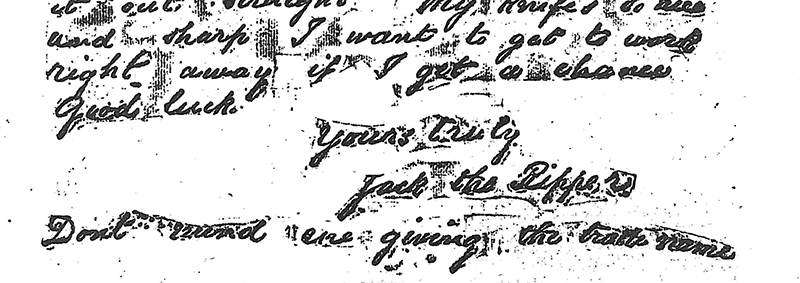| By Tara Blair |
Dear Boss,
I keep on hearing the police have caught me but they wont fix me just yet. I have laughed when they look so clever and talk about being on the right track.
Yours truly,
Jack the Ripper
In autumn 1888, five women were murdered in the east London slums at the hands of an unknown killer. This murderer came to be known as “Jack the Ripper,” a man who repeatedly evaded and taunted the police.
During the Jack the Ripper murder era, police, media, and local officials received an onslaught of letters—making Jack the Ripper the first “media serial killer.” Due to his mystique and unknown identity, this case remains one of England’s most notorious unsolved cases.
The Letters
Although the vast majority of the letters were believed to be hoaxes, three stood out:
Note: To date, none have been proven authentic.
Dear Boss Letter
Dated September 25th, 1888, the Dear Boss letter was received by the Central News Agency two days later, but didn’t gain attention until Catherine Eddowes’s murder on September 30th. The letter mentions clipping off the next victim’s ears. When her body was discovered, Eddowes was found with a cut earlobe.
The letter was penned in red ink and, like many other Jack the Ripper letters, had many grammatical errors.
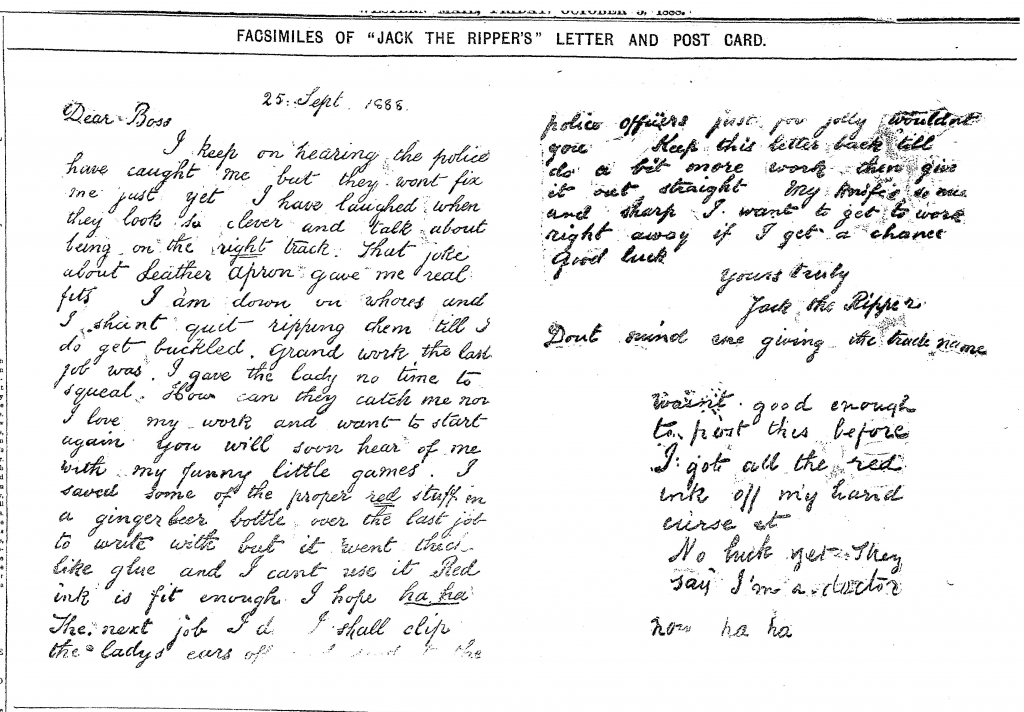
“THE LONDON TERROR.” Western Mail [Cardiff, Wales] 5 Oct. 1888: n.p. British Library Newspapers.
Saucy Jacky Postcard
Penned on October 1, 1888, and also addressed to the Central News Agency, the Saucy Jacky postcard had handwriting that mimicked the Dear Boss letter in penmanship, ink color, and grammatical errors. It was similarly written to an “old Boss” and mentioned not having time to get “ears off.” The postcard referred to the murders of Elizabeth Stride and Catherine Eddowes, both of which occurred on September 30th, as a “double event.”
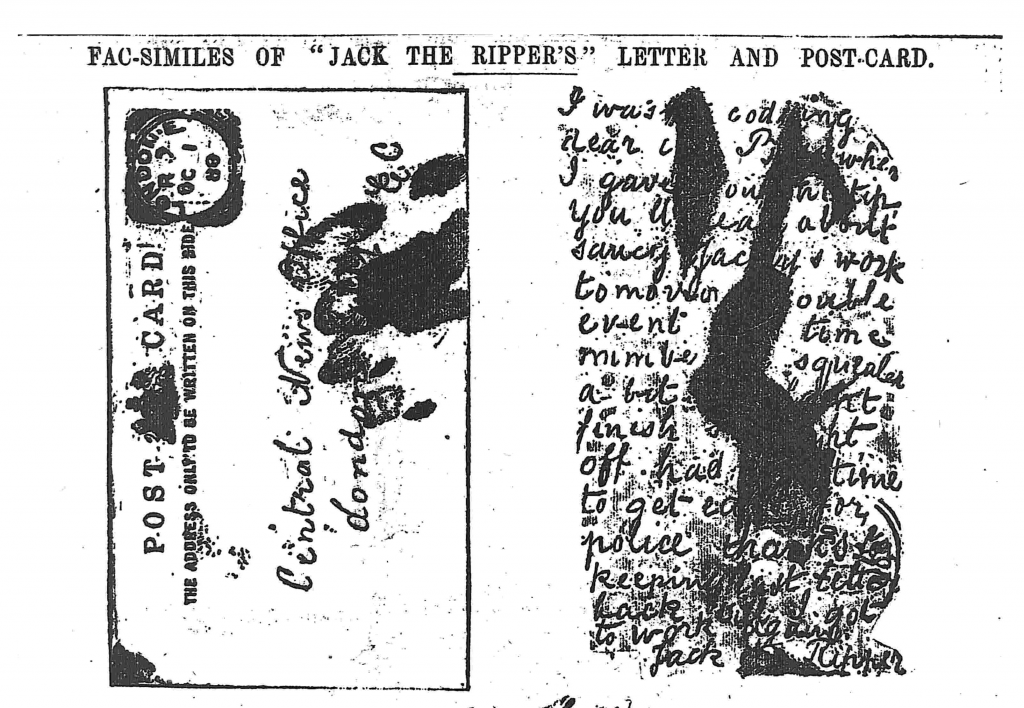
“FAC-SMILES OF ‘JACK THE RIPPER’S’ LETTER AND POST-CARD.” Sheffield & Rotherham Independent [Sheffield, England] 5 Oct. 1888: 5. British Library Newspapers.
From Hell Letter
Perhaps the most disturbing of the three letters, the From Hell letter was written for George Lusk, the chairman of the Vigilance Committee in Whitechapel. The letter contained a partial kidney, thought to belong to Catherine Eddowes. In the letter, the writer claimed to have eaten the missing part. While the letter was unsigned, the words “From hell” were written in the top right corner. It contains more grammatical errors than the previous two letters and the handwriting is unique.
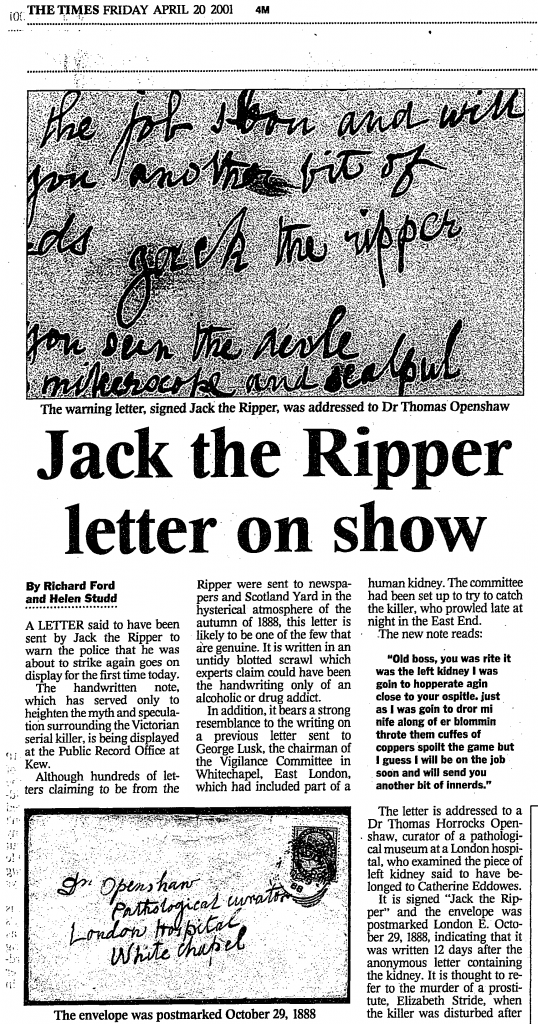

Theories
There are countless theories about the identity of Jack the Ripper. Here are two feasible speculations:
Jack the…Butcher?
During this era, slaughterhouses were common and butchers often walked the streets wearing bloodstained clothing. This may explain how in the Catherine Eddowes’ murder Jack the Ripper was able to flee the scene quickly while covered in blood, and did not appear suspicious to patrolling police.
Another basis for the butcher theory is the fact that a butcher would have impeccable knife skills. Butchers are well-trained at cutting out the organs of animals before selling their meat, similar to the precision with which the kidney of Catherine Eddowes and the uterus of Annie Chapman were cut. Elizabeth Stride’s cause of death was one clear-cut incision that severed the main artery on her neck, which would require more than basic anatomic knowledge and skill with a knife.
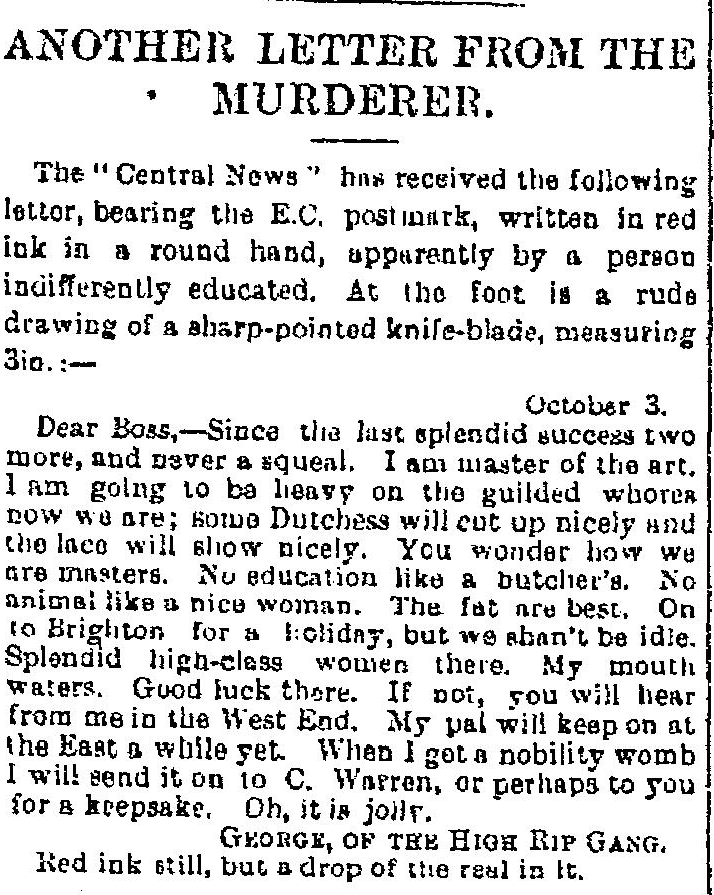
“THE LONDON TERROR.” Western Mail [Cardiff, Wales] 5 Oct. 1888: n.p. British Library Newspapers.
…the Foreigner?
Another theory is that the murderer was a non-Englishman working on a foreign vessel that traded regularly with London. This could explain his less than perfect grammar—although many theorize the murderer made these mistakes deliberately to misdirect the police (but that’s a theory for another time)—and the ease with which he escaped.

“THE WHITECHAPEL ATROCITY.” Reynolds’s Newspaper [London, England] 21 July 1889: n.p. British Library Newspapers.
Suspects
During the course of their investigation, police regarded several men as strong suspects, though none were ever formally charged:
Montagu John Druit
Although there was no concrete, scientific evidence implicating him in the murders, the fact that the murders ended after Druitt’s suicide convinced many London detectives that Druitt was Jack the Ripper. He was an Oxford-educated man who some believed to be “sexually insane.” Witnesses reported him in the Whitechapel area around the time of the murders. On November 9, 1888, seven weeks after the murder of Mary Jane Kelly who is believed to be Jack the Ripper’s final victim, Druitt’s body was found floating in the Thames River. Investigators concluded that the cause of death was suicide, and that Druitt had been at the bottom of the river for at least several weeks—which matched the timing of Mary Jane Kelly’s murder.
-
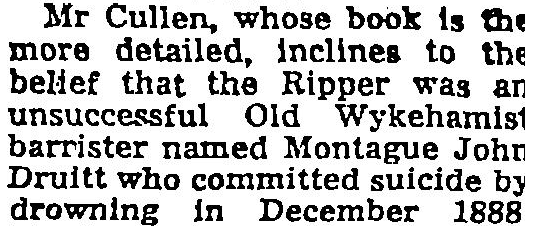
Storr, Anthony. “The Ripper’s shadow.” Sunday Times [London, England] 25 July 1965: 34. The Sunday Times Digital Archive, 1822-2006. Carl Feigenbaum
Another possible suspect behind the Jack the Ripper murders was Carl Feigenbaum, a German merchant sailor. At the time, Feigenbaum worked as a merchant on ships docked near Whitechapel. Records prove that the days Feigenbaum worked in Whitechapel coincided with the dates of the five Jack the Ripper murders that took place in London’s East End. Implicating Feigenbaum further, witnesses identified him and fellow sailors as frequent visitors to the nearby brothels.
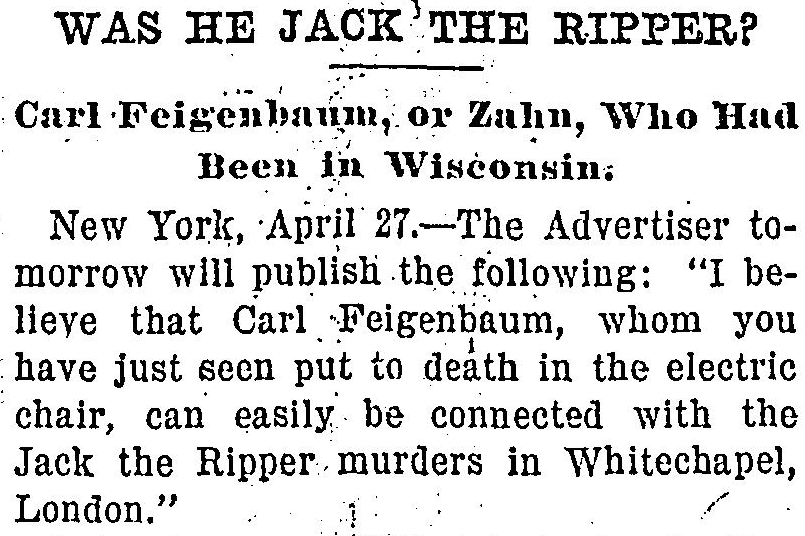
“Was He Jack the Ripper?” Milwaukee Sentinel [Milwaukee, Wisconsin] 28 Apr. 1896: n.p. Nineteenth Century U.S. Newspapers.Aaron Kosminski
Several highly esteemed police officers presumed Aaron Kosminski, a Polish barber, to be Jack the Ripper. The recent discovery of his mitochondrial DNA on Catherine Eddowes’s shawl, 126 years after her murder, adds to suspicions around Kosminski. Born in Russia in 1864, Kosminski settled in London in the early 1880s. He worked as a hairdresser in Whitechapel during the time of the murders.
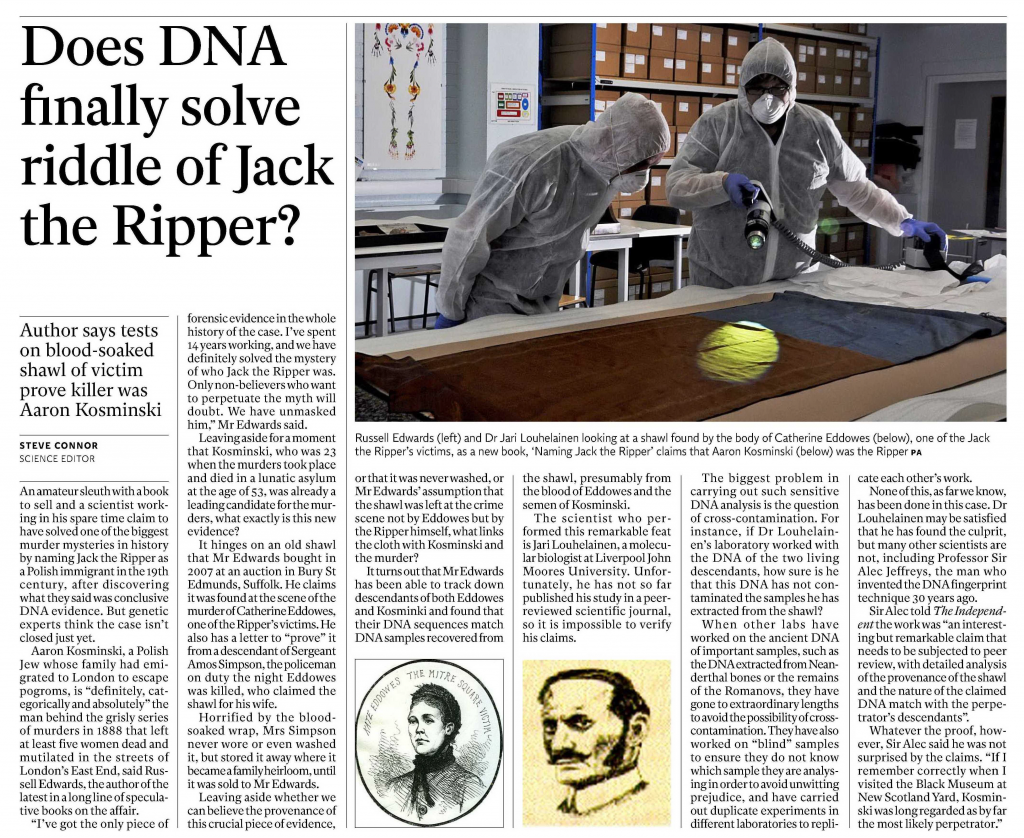
Connor, Steve, Science Editor. “Does DNA finally solve riddle of Jack the Ripper?” Independent [London, England] 8 Sept. 2014: 14. The Independent Digital Archive.It is important to note that the test results from the silk shawl, which was stained with blood, are controversial and at this time are not enough to prove Aaron Kosminski was Jack the Ripper.
Meet the Author
Tara Blair is a Digital Strategy Manager at Gale, part of Cengage Group. In her spare time, she is a total crime junkie and spends most of her time enjoying podcasts—especially unsolved mysteries.

